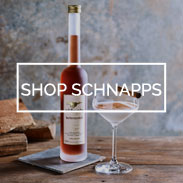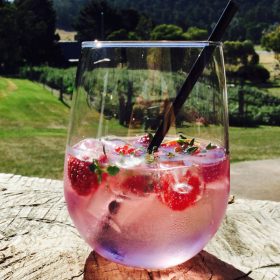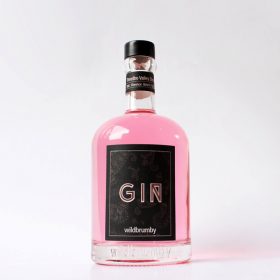It is the question on the tip of every tongue. What do you mix with your Pink Gin?
Just when you thought gin could not get any more popular, along came the pink variety.
We launched our raspberry-infused Rubus Patch gin in 2017, and since then interest in these fruity variations of gin has gone through the roof.
But if a bottle of beautiful Pink Gin landed in your liquor cabinet today, would you know which mixers and garnishes to employ to flatter those luscious fruity notes?
This task is not as simple as many would think, and to find out why this is, we need to go back the very beginning of the Pink Gin story.
Firstly, not all pink gins are the same. Early versions of the drink were created by mixologists combining traditional gin with Angostura bitters to give it a faintly pink blush. But more recently, some distillers have been putting the pink directly into their gin, using distillations of raspberry, pomegranate, or grapefruit — just to name a few.
In hot demand they may be, but the addition of these new flavour profiles can present substantial challenges to distillers of traditional gin.
The reason for this is that the Juniper berry is the life and soul of gin — and must actually be the dominant botanical for a bottle to carry the label of Gin.
And then there are those quintessential citrus notes to contend with.
So how does a gin distiller introduce berry notes without drowning out the Juniper, crowding out the citrus, and inadvertently creating something that can no longer call itself gin?
We think the real skill here is to introduce those notes in a very gentle way, complementing, but never upstaging, core botanical elements.
Once this perfectly balanced bottle of pink gin is ready for gin lovers to enjoy, the next challenge is how to tease out those beautifully blended berry notes in the glass.
Mix with care
Serving up a pink gin should be a simple task. After all, tonic has been paired with gin ever since the British introduced the quinine based drink to its overseas troops in a bid to fend off malaria.
And because pink gin must stay so true to the botanical makeup of the traditional variety, it stands to reason it should pair just as well with tonic as its non-pink brethren.
While we have no particular objection to that famous trio of tonic, lemon and ice, we do fear that this combination might wash away those subtle raspberry notes.
Fortunately, with a vast army of quality tonics storming bottle shops nationwide, the pink gin enthusiast is spoiled for choice, as long as they are keen to experiment a little.
Some pink gin drinkers will add a splash of lemonade or Prosecco to their tonic, and play around with fruit garnishes to help balance out the flavour profile.
If you want to follow in the footsteps of these pioneers then the key thing to consider is the bitter-sweet balance of your garnish and mixer.
A popular rule of thumb is to match like with like — for example using berry garnishes and/or berry flavoured tonics to complement a berry profile of your pink gin. Overlaying new flavours, such as Elderflower, can be a delicious alternative, and it’s well worth taking the time to discover your own winning combination.
As gin purists, we like to pair our own Pink Rubus Patch gin with a good splash of soda water, ice and plenty of fresh raspberries on top.
This brings out those gentle notes of organically grown raspberry, rose, cardamom, coriander and native mountain pepper berry, and never overwhelms the essential citrus-juniper foundations on the palate.
But in the end, you should let your own taste buds do the talking.

 Shop
Shop Shop Schnapps
Shop Schnapps Shop Gin
Shop Gin Stockists
Stockists Our Story
Our Story News
News Spalding Art
Spalding Art Distiller’s Blog
Distiller’s Blog Schnapps Distilling
Schnapps Distilling Gin Distilling
Gin Distilling Gallery
Gallery Distillery Door & Cafe
Distillery Door & Cafe Sculpture & Garden Walk
Sculpture & Garden Walk Contact
Contact Join Our Team
Join Our Team Join the Wildbrumby Club
Join the Wildbrumby Club

